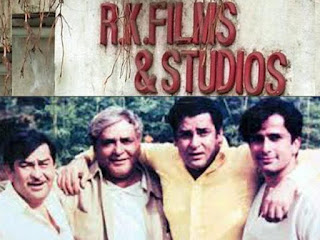Recall the song “Hey, Maine Kasam Li” where the hero Dev Anand on a Bicycle and the heroine Mumtaz sitting on the crossbar riding across green fields singing the song with very little action and lots of cuddling. What a picturization.
Tere Mere Sapne is one of my favorite movies. It has substance. Commercially, it did not do very well at the box office but I believe it is one of the most sensitive Bollywood movies by Goldie Vijay Anand. He also acted in this film, he plays a doctor and gave a memorable performance.
The film is based on the novel “The Citadel” by A.J.Cronin, published in 1937 in UK. based on his own experiences as a doctor. Dedicated to the medical community, the film starts off with a young, idealistic MBBS doctor Anand Kumar (Dev Anand) moving to a village near a coal mine. He attains his degree in medicine and re-locates to a small village to assist the local doctors there. Upon arrival, he is met by the ailing Dr. Prasad and his wife, and hired on a salary of Rs.250/- per month. He meets with the other doctors namely Dr. Kothari (Vijay Anand), an alcoholic, and Dr. Bhutani, a dentist. Anand finds that he is saddled with all of Kothari's work as well his own due to the reason that Kothari is drunk every night. He nevertheless carries on, aided by the local school-teacher, Nisha Patel(Mumtaz), who he eventually marries. Then one day a proud father, Phoolchand, gives a baksheesh to Anand for the safe delivery of his first-born. This does not auger well with Mrs. Prasad and she fires Anand. Anand and Nisha re-locate to Bombay, and after sometime Anand establishes himself as a leading doctor, is honored for his thesis, and gets to be the personal doctor of a leading Bollywood actress Maltimala. When Dr. Kothari and Dr. Bhutani go to visit them, they find while Nisha is still the same good-natured woman, who is expecting a child, Dr. Anand is a changed individual, who has no time for friends, personal life, or even his wife, and is not even aware that she is pregnant. The two return home disappointed, followed by Nisha, who has decided to separate from Anand.
There are many beautiful songs and several great dances featuring Hema Malini. Vijay Anand’s direction keeps things moving along at a good pace. There are so many wonderful characters in this film too. Mumtaz gave a stunning performance. Music by S D Burman and lyrics by Neeraj is superb.
| Song | Singers | Picturised on |
|---|---|---|
| "Phurr Ud Chala" | Asha Bhosle | Hema Malini |
| "Mera Saajan Phool Kanwal Ka" | Asha Bhosle | Jayshree T. |
| "Jaisa Radha Ne Mala Japi" | Lata Mangeshkar | Mumtaz, Dev Anand |
| "Ae Maine Kasam Li" | Lata Mangeshkar, Kishore Kumar | Mumtaz, Dev Anand |
| "Jeevan Ki Bagiya Mehkengi" | Lata Mangeshkar, Kishore Kumar | Mumtaz, Dev Anand |
| "Tha Thai Thatha Thai" | Asha Bhosle, Chorus | Hema Malini |
| "Mera Antar Ek Mandir Hai Tera" | Lata Mangeshkar | Mumtaz |
| "Zamaane Dhat Tere Ki" | Manna Dey | Agha |






























